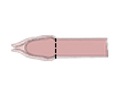Circumcising men reduces the risk of transmitting types of human papilloma virus associated with cervical and anal cancer to women, according to a study published in The Lancet.

Male circumcision has been done for many years as a religious tradition. It has been thought to confer protection against sexually transmitted infections and diseases such as cervical cancer since the 19th century. A low incidence of cervical cancer in Jewish women—women who were married to circumcised men was noted as early as in 1901. Cervical cancer is rare in communities in which men are circumcised. A number of observational studies found a protective role for circumcision; definitive evidence was not obtained until randomised trials of adult male circumcision were completed.
The following observations come from previous trials done in Uganda, Kenya, and South Africa:
· Male circumcision substantially decreased the risk of HIV acquisition in men
· It also reduced the prevalence of penile high-risk HPV infection by about 35%
· The practice also reduced the acquisition of new high-risk HPV infections, and increased clearance of pre-existing high-risk HPV infection in men without HIV infection.
· Compared with female partners of uncircumcised men, female partners of circumcised men had lower rates of genital ulcer disease, Trichomonas vaginalis infection, and bacterial vaginosis.
· Male circumcision did not reduce the rate of HIV transmission from men with HIV to their female partners
Two parallel but independent randomised controlled trials of male circumcision which enrolled HIV-negative men and their female partners between 2003 and 2006, in Rakai, Uganda were performed. The effectiveness of male circumcision to prevent high-risk HPV infection in HIV-negative female partners of HIV-negative men was assessed in these trials.
‘Circumcision of adolescent and adult men in a rural Ugandan population significantly reduced the prevalence and incidence of both low-risk and high-risk HPV infections and increased clearance of high-risk HPV infections in their female partners,’ reported The Lancet.
The finding of the recent trials accords with observational studies that show lower rates of cervical cancer associated with male circumcision.
Male circumcision should be accepted as an efficacious intervention for reducing the prevalence and incidence of HPV infections in female partners. Since this protection is only partial it is also important to promote safe sex practices.
Source: The Lancet, Early Online Publication, 7 January 2011
Source-Medindia













